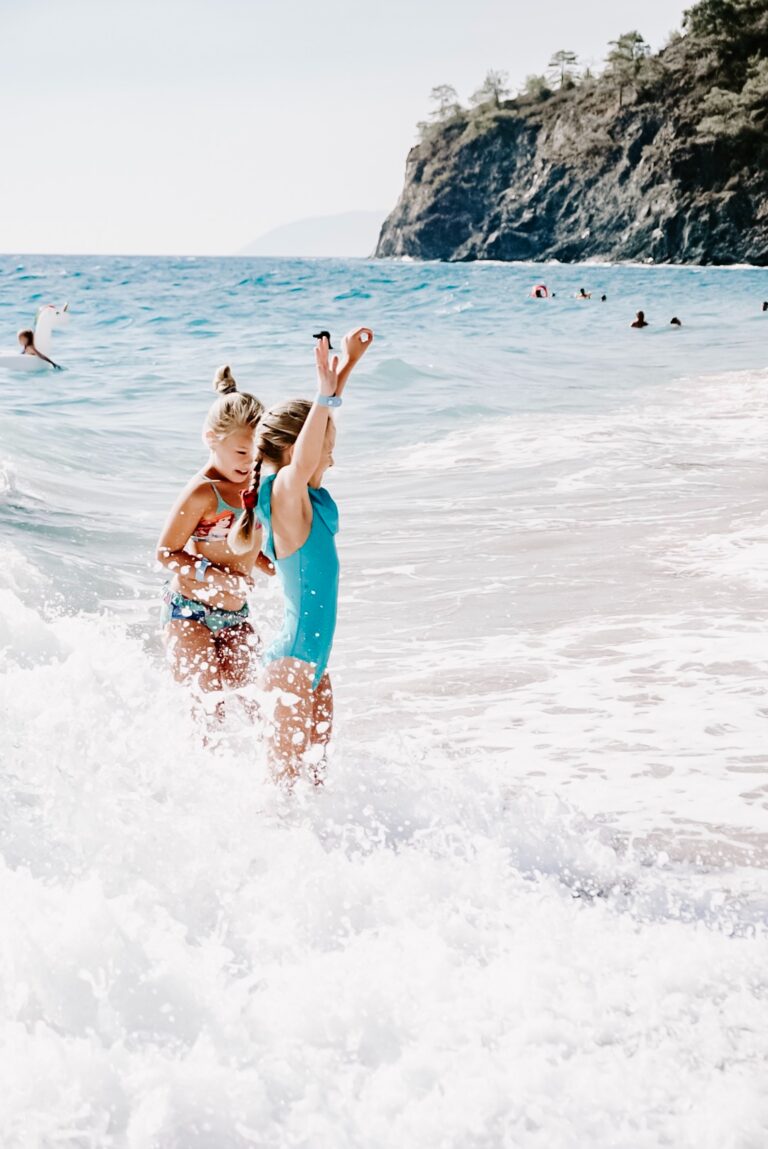Learning to swim is an important life skill that should be addressed both for the fun and for the safety of the child. Not only can it provide children with the opportunity of enjoying the water, it also promotes water safety. Many parents question when their child should start taking swim lessons. The American Academy of Pediatrics (AAP) recommends that every child over 1 year old learn to swim (and their parents too).
To unpack this a little, so you can make your own informed decision on what age is safe and beneficial for your child to begin venturing into the water, here are the factors to consider. Informed parents are more able to decide when their child is ready for swim classes.
Benefits of Swim Lessons
The most important part of learning to swim is that it teaches children to respect water. Water safety skills can prevent the risk of drowning. The AAP reports that with children ages 1-4, drowning is the leading cause of injury-related death in the US. And the USA Swimming Foundation maintains that formal lessons can reduce the risk of drowning by 88 percent.
While swim lessons don’t totally prevent the risk of water related injuries, the knowledge that children learn can make a difference. Beyond water safety, swim lessons have been shown to increase a child’s confidence and enhance motor skills development. Children who have begun swimming show high cognitive and emotional maturity. Water classes are also a great time for family bonding. Parents should expect to spend class time in the water with their child. This strengthens bonds and can be a great way to have fun together.
When Should A Child Start Lessons?
As every child develops at different rates, there may be no definitive answer to this question. Most experts now recommend starting a child’s swim lessons at age one. Some advocate at least introducing a child to water even earlier so that they become used to the experience. If you have any questions, talk with your pediatrician to see if they think that your child is ready for classes. And visit your nearest facility that offers swimming lessons for kids to get an instructor’s advice and to feel the situation out.
Basically, when trying to make the decision about when to start swim classes, consider your child’s emotional maturity and their physical abilities. Some parents believe that their children are ‘water babies’ but this doesn’t necessarily mean that they have all of the skills to protect themselves safely in a pool or lake. Most children are ready for swim classes by their fourth birthday. This is when they are physically and cognitively able to learn basic water safety skills.
The basics include floating, treading water and how to get safely out of the water. As kids progress, they will add skills such as the front crawl. But for those who don’t want to wait that long, it is increasingly common to see infant water classes. Instructor teaching skills have become more specialized to enhance children’s ability to control their breathing, heads and limbs to make being in the water truly safer. Many children as young as two can actually turn back to the wall after falling in, and hold onto it for safety.
Layers of Safety
Beginning swim lessons can be a truly exciting experience for children and their families. It offers many new opportunities for fun and exercise together. It is important to develop layers of safety to ensure that a child’s environment is safe. Homes that have a pool should have it enclosed by a fence with a self-closing and locking gate. Children are naturally curious so it’s important that they are protected when a parent is not close at hand.
And children should NEVER be left unsupervised in the water. An adult should always be watching. This means they should always be actively overseeing swim activities, not reading a book or using their phone. For infants and toddlers, parents or an adult should always be literally within an arm’s length to provide “touch supervision” while in the water. Taking these steps can create a safer environment and teach children to respect water and water safety.
What to Look for in Swim Instruction
Most children are ready for toddler and preschool swim classes between the ages of 1-4. Classes should teach water survival skills training. This includes how to turn around and grab the wall for safety. Some programs have children roll over to their backs in the water, and float and breathe while waiting for an adult to come to them – training in the response if they accidentally fall in. At this early age, they won’t be learning strokes but they should be learning to put their face under the water and hold their breath.
Instruction should include good safety habits in the water. Instructors should also teach children what to do if they accidentally fall into water. Classes at this beginning stage should include a parent or adult. Look for classes that last for approximately 30 minutes and have 1 certified and trained instructor per every six parent/child pair.
When looking for an appropriate swim class, you may have to look at several programs to find the one that provides the best instruction for your child. Many cities provide a number of class options at public pools. And there are commercial schools offering lessons for kids and infants, such as at this swim school in The Woodlands, TX.
Getting children involved in swimming early in life provides them with so many benefits. It will teach them water safety skills and build their confidence. It will also strengthen their bodies and enhance motor skills development. Plus, swimming is fun! Introducing kids to swimming early can create a lifelong enjoyment of water activities.
Photo by Julia Kuzenkov from Pexels




